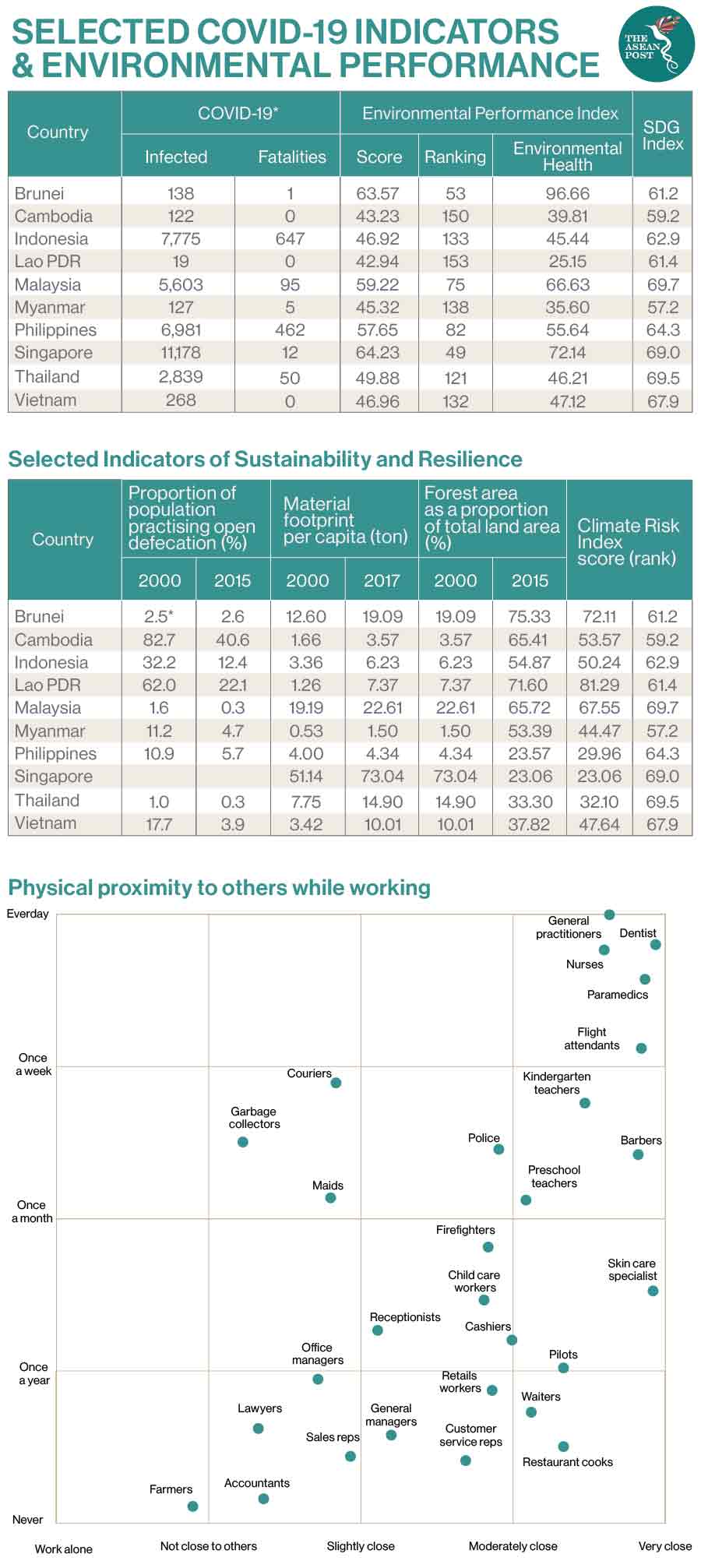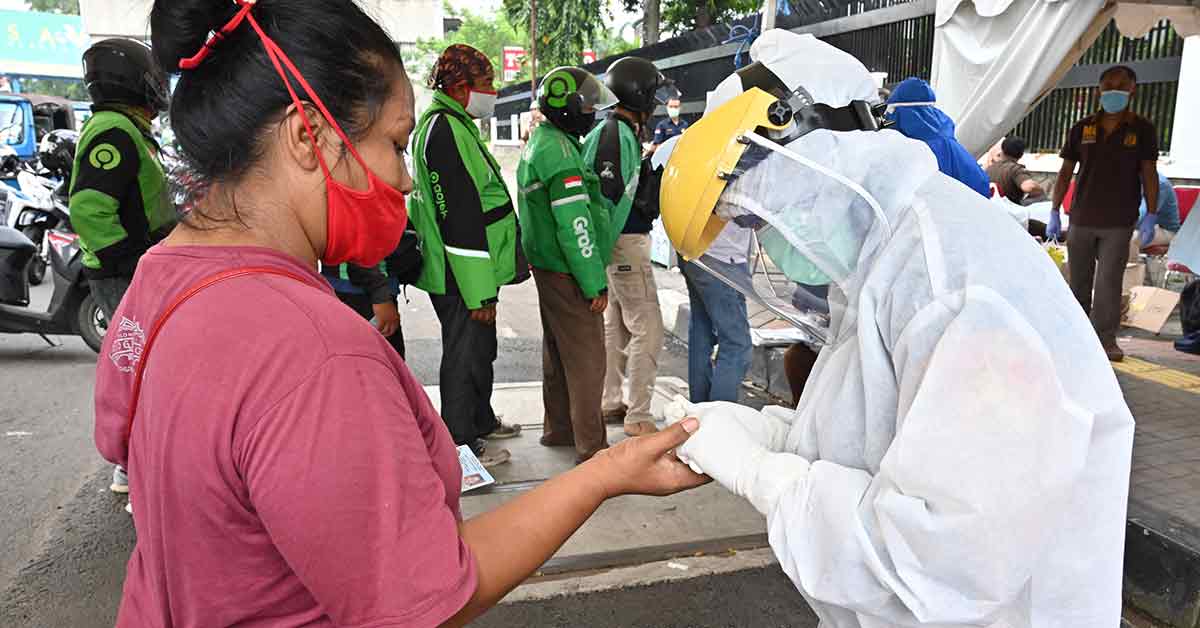22 April marked the 50th Anniversary of Earth Day, which was strikingly different from previous years. Countries across the planet are grappling with an unprecedent situation in which a seemingly innocuous virus illness spread into a global pandemic in less than 90 days. It has infected more than 2.4 million people in more than 200 countries, claimed over 170,000 lives, and has brought most economic activity to a standstill. In this region, ASEAN and East Asia, the authorities have responded decisively with a strong, whole-of-government approach. So far it has brought immediate disruptions to air travel, community quarantines, stay-at-home orders, temporary business closures, and social distancing. Life under the coronavirus containment has become the new normal.
This new normal has resulted in short-term environmental improvements, including significant enhancement in local air-pollution in mega cities and decreased energy use and thus reduced global warming greenhouse gas (GHG) emissions. The spread of COVID-19 has also increased public awareness of personal hygiene, the importance of public health and the consequences of lack of resilience and preparedness to deal with such a pandemic shock. Climate change, water pollution and the drivers of biodiversity loss, such as deforestation and illegal wildlife trade, may increase the risk of further pandemics, such as vector borne infections.
One new infectious disease emerges in humans every four months. 75 percent of these emerging diseases come from animals. A healthy ecosystem helps to protect us from these diseases. Biological diversity makes it difficult for pathogens to spread rapidly. It is estimated that around one million animal and plant species are now threatened with extinction. To fight climate change and biodiversity loss, turning to sustainable models will help not just our planet, but human health as well.
Earth Day 2020 comes at a tumultuous time. The immediate priority for governments is to protect people by limiting the spread of the coronavirus and aiding the economic recovery to bring tangible social benefits to individuals. Governments in the region have announced stimulus packages totalling around US$3 billion, to assist hard hit sectors, self-employed individuals with wage subsidies, additional spending on health care, tax exemptions, interest rate cuts, etc. At the same time, the window of opportunity to take strong actions on the 2030 Sustainability Agenda is closing fast. When the pandemic recedes and recovery starts, the effects of governments’ stimulus packages will need to be aligned to “build back better”, to capture opportunities for leap-frogging to green investments, such as renewable energy, smart housing, green public procurement, and public transport – all guided by the principles, indicators and standards for sustainable society.

Sustainable societies are inherently inclusive and resilient. From that perspective, three imperatives are necessary, while governments are designing short-term, sector specific and macro-economic policy responses to the pandemic emergency and recovery.
First, resilience is essential. It has been heart-breaking to witness people risk their lives due to shortages of critical medical and safety equipment, including masks worth less than a dollar. This lack of planning and preparation for the outbreak has starkly demonstrated the importance of resilience: the ability for human systems to anticipate, cope, and adapt. Resilience is also critical for countries and communities to respond to climate change, where further temperature increases are certain. Policy makers must succeed in planning for and adapting to climate change or risk further calamities.
Second, stimulus packages must be sustainable. Governments around the region are racing to implement economic stimulus and support packages to keep individuals, businesses, and economies afloat. While supporting their urgent implementation, policy makers must ensure that these measures pave the way to a more sustainable economy and do not lock us further into a high-carbon future. Periods of high unemployment and low interest rates are the right time for new low-carbon investments and high-quality infrastructure, including the kind required to support the transition to clean energy, sustainable production and consumption as well as circular economy.
Third, inequality needs to be addressed. The pandemic is an unprecedented global shock that magnifies the impact of inequality, hitting the poor, women and the elderly the hardest. Frontline workers in the service economy of medical, food and hospitality are women and they are among the most exposed to the virus and the least able to absorb its financial impacts. And the hardest hit will be the poor in the informal economy, where already-struggling workers such as waste pickers, sewerage cleaners, and construction labourers will not have the benefit of social safety nets and stimulus packages. Policy makers must immediately help finance these communities while flattening the pandemic curve. Longer term, they must redouble efforts to foster sustainable economic systems, including fair trade and socially inclusive investment.
All three of these actions are closely connected to the Paris Climate Agreement, the Sustainable Development Goals (SDGs) and the ASEAN Community Blueprint. In addition, their scale and complexity demand that countries, corporations and communities continue to act together to achieve the future we want. We share a single planet, drink the same water and breathe the same air. If there ever was a time in which humanity should finally recognise that we belong to one connected family on Earth, this should be it.
Related articles:

